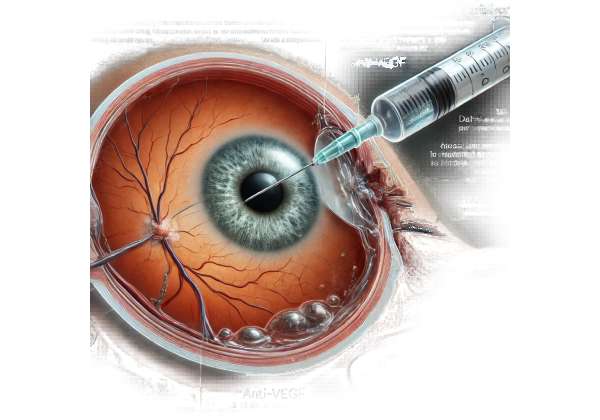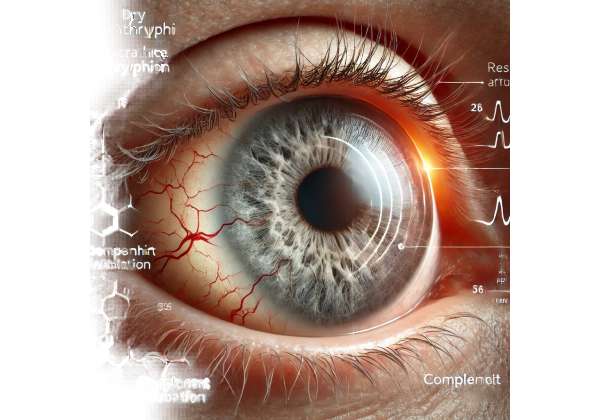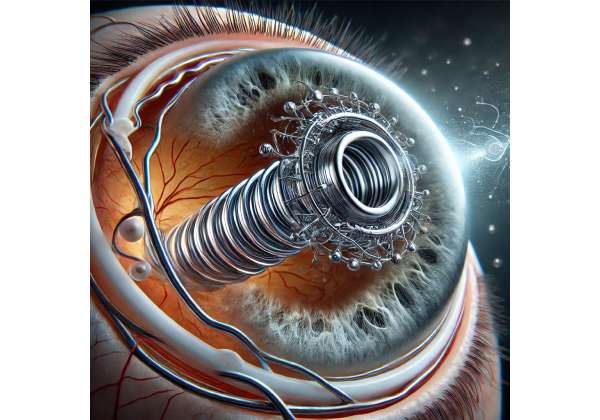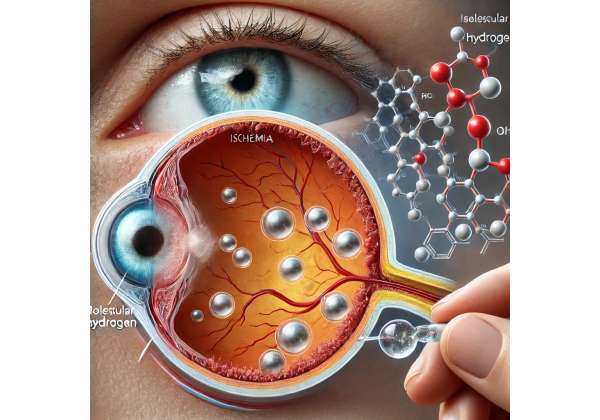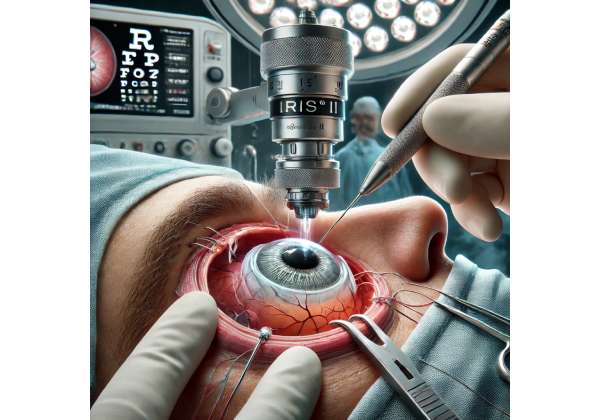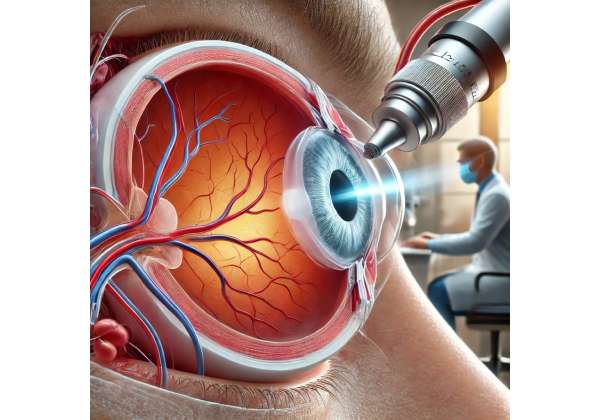Managing Retinal Vein Occlusion Eylea’s Efficacy as a New VEGF Inhibitor
Retinal vein occlusion is a serious eye condition that can lead to sudden vision loss or gradually worsening eyesight, often disrupting an individual’s ability to carry out everyday tasks with confidence. Many patients find that simple activities like reading or navigating dimly lit environments become more difficult, leading to heightened anxiety about disease progression. Recent advancements in medical research...
Managing Optic Neuropathy with Low-Level Neuroprotective Laser Therapy
Optic neuropathy can be a life-altering condition, often presenting with gradual vision loss that affects everyday activities and overall quality of life. Many individuals experience challenges such as blurriness, difficulty with peripheral vision, and trouble distinguishing contrasts or colors. While these symptoms vary in intensity from person to person, the uncertainty about how quickly or slowly they might progress...
Managing Ocular Hypertension with Rocklatan: A Cutting-Edge Combination Therapy for Better Control
Ocular hypertension often goes unnoticed until it reaches a point where eye pressure levels become a significant risk for vision-threatening conditions. Many people fail to recognize the early signs of elevated intraocular pressure (IOP), believing that serious eye problems always come with unmistakable pain or obvious symptoms. In reality, ocular hypertension can remain silent for years, gradually increasing one’s...
Managing Ocular Hypertension with Durysta A Modern Biodegradable Implant for Eye Pressure Control
Living with elevated eye pressure can be stressful—literally and figuratively. You might constantly wonder if those glaucoma drops are doing enough, or if you’ll remember to put them in on time every day. For many years, medicated eye drops have been the standard approach to prevent ocular hypertension from progressing to full-blown glaucoma. However, not everyone tolerates daily drops...
Managing Myopic Choroidal Neovascularization Lucentis as a Cutting-Edge Measure for Preventing Vision Loss
If you’ve ever struggled to read traffic signs in the distance or found yourself holding books inches from your face, you know the inconveniences of nearsightedness (myopia). But in some cases, myopia brings more than just the usual squinting and headaches. For certain individuals, progressive myopia can lead to a serious complication called myopic choroidal neovascularization (CNV)—an overgrowth of...
Managing Diabetic Retinopathy with Photobiomodulation Therapy A Non-Invasive Light Treatment
Have you ever wished you could harness a simple beam of light to improve your health? It sounds like science fiction, but that’s exactly the idea behind photobiomodulation therapy—a technique where specific wavelengths of light help cells function more efficiently. As diabetic retinopathy continues to be a leading cause of preventable vision loss worldwide, many patients look beyond traditional...
Managing Diabetic Macular Edema The Role of Avastin in Reducing Retinal Swelling with Modern Treatment
Have you ever felt like your vision was slipping away, making simple tasks—like reading your favorite book or recognizing a familiar face—unexpectedly challenging? For many people with diabetes, that worry becomes real when diabetic macular edema (DME) starts to take hold. As one of the more serious complications of diabetic retinopathy, DME can gradually blur central vision, stealing away...
Managing Diabetic Macular Edema How Vabysmo’s New Approach Targets VEGF-A and Ang-2
Have you ever wondered why some patients with diabetic macular edema (DME) seem to improve quickly while others require multiple therapies just to maintain their vision? In a condition so intricately linked to vascular leakage and inflammatory signals, even minor changes in molecular pathways can lead to big differences in clinical outcomes. That’s where Vabysmo steps in with a...
Luxturna and AAV8-RPE65 for Leber’s Congenital Amaurosis A Breakthrough Genetic Treatment
If you’ve ever questioned whether sight can be restored through a single targeted intervention, you’re not alone. For decades, scientists believed that once a genetic eye disease progressed beyond a certain point, no amount of medication or surgery could meaningfully reverse it. That conventional wisdom is changing fast. One of the most remarkable advances is the use of viral...
Luxturna (Voretigene Neparvovec) FDA-Approved Gene Therapy Targeting RPE65 Mutations in Retinitis Pigmentosa
Have you ever imagined a world where genetic eye diseases can be treated at their source, rather than just managed over time? Thanks to pioneering research and groundbreaking technology, that future is already here. Luxturna (voretigene neparvovec) has emerged as the first FDA-approved gene therapy to directly address inherited retinal dystrophies, specifically those involving mutations in the RPE65 gene....
Lucentis for Retinal Vein Occlusion Treating Vision Impairment with a New Monoclonal Antibody Approach
If you’ve been struggling with blurred or distorted vision, especially if it came on unexpectedly, you might be dealing with retinal vein occlusion (RVO). This condition can lead to sudden vision changes that make everyday tasks—from reading a menu to recognizing familiar faces—feel like an uphill battle. The good news is, cutting-edge treatments like Lucentis (ranibizumab) offer hope for...
Lucentis for Neovascular Age-Related Macular Degeneration Preserving Vision with a Modern Ranibizumab Treatment
Have you ever worried about losing your ability to read your favorite novels or recognize the faces of loved ones? If you’re dealing with age-related macular degeneration (AMD)—particularly the neovascular or “wet” form—you’re far from alone. Millions of people around the world grapple with the challenges of AMD every day, including the sudden, disorienting blurriness at the center of...
Lucentis’ Benefits in Diabetic Macular Edema Managing Retinal Swelling with Cutting-Edge Anti-VEGF Therapy
If you’ve been wondering how advanced therapies can help control diabetic macular edema (DME) and preserve your precious eyesight, you’re not alone. The journey to clearer vision doesn’t have to be complicated—even for those dealing with diabetes-related eye complications that can cause blurry vision and daily frustration. One of the most promising and widely discussed treatments is Lucentis, a...
Low-Level Light Therapy for Dry Eye Disease How LLLT Provides Relief
Ever found yourself blinking repeatedly in front of a computer screen, trying to combat stinging, burning eyes that just won’t stay moist? If so, you’re in good company—millions around the globe grapple with dry eye disease every day. What might surprise you is that beyond the usual artificial tears or warm compresses, there’s an emerging technology that’s capturing the...
Lowering Eye Pressure in Ocular Hypertension The Benefits of Simbrinza’s Cutting-Edge Therapy
Have you ever noticed that rising eye pressure rarely causes obvious symptoms, yet it can silently pave the way for glaucoma down the line? It’s a tricky situation that leaves many people confused about whether to start medical treatment—even when their doctor raises the alert about ocular hypertension. The fact is, elevated intraocular pressure (IOP) is a leading risk...
Long-Acting Injectable Aflibercept The Future of Diabetic Retinopathy with Extended-Release Management
Have you ever wondered why certain eye injections for diabetic retinopathy need to be repeated so frequently? If you’re among the millions dealing with this condition, you know how challenging the monthly or bimonthly visit can be. Between juggling schedules and enduring each needle prick, it can feel like a never-ending cycle. But imagine a scenario where treatments are...
Light Adjustable Lenses (LAL) UV-Activated Lenses Offering Custom Vision Adjustments After Cataract Surgery
Have you ever wondered why some people still need glasses or contact lenses after cataract surgery, even though the procedure is designed to restore clear vision? You’re not alone. Standard intraocular lenses (IOLs) can’t always account for unique healing responses or subtle changes in the eye after surgery—leaving some patients slightly off-target when it comes to optimal refraction. Now,...
Laser Vitreolysis A Game-Changer for Treating Symptomatic Vitreous Floaters
Have you ever glanced at a bright sky or computer screen only to notice small specks drifting across your field of vision? These squiggly lines, spots, or cobweb-like shadows are commonly referred to as vitreous floaters. Although often harmless, floaters can become frustratingly noticeable—and in some cases, they can significantly interfere with reading, driving, or simply enjoying everyday activities....
Lactobacillus Acidophilus Probiotic Therapy in Uveitis New Frontiers in Reducing Inflammation
Did you know that your gut could play a crucial role in the health of your eyes? It might sound surprising, but emerging evidence suggests that an imbalance in gut bacteria (known as dysbiosis) can have wide-reaching effects on the body—including conditions like uveitis, an inflammatory disease affecting the middle layer of the eye. The idea that certain “good”...
Klarity-C for Dry Eye Disease Enhancing Eye Moisture with Advanced Chondroitin Sulfate Ophthalmic Solution
Have you ever felt like your eyes are desert-dry, even though you’re blinking and adding eye drops regularly? You’re not alone—millions of people across the globe experience the stinging, burning, and blurred vision linked to dry eye disease. These symptoms can turn into more than just a minor inconvenience, affecting everything from reading and driving to your ability to...
Izervay (Avacincaptad Pegol) A Breakthrough Complement Inhibitor for Managing Geographic Atrophy in Dry Age-Related Macular Degeneration
Have you ever wondered why some forms of age-related macular degeneration (AMD) progress more aggressively than others? Geographic atrophy, a late-stage manifestation of “dry” AMD, is particularly notorious for gradually eroding central vision, often leaving patients with stark blind spots in the center of their visual field. For years, patients and eye care professionals had limited tools to combat...
iStent Infinite How This Third-Generation Micro-Stent Optimizes Eye Pressure Control
Imagine you’ve just been told you have glaucoma—one of the leading causes of irreversible vision loss worldwide. Perhaps your eye doctor explains that your intraocular pressure (IOP) has been climbing despite multiple eye drops or laser procedures, and you’re worried about what that means for your long-term sight. Fortunately, minimally invasive procedures like the new iStent Infinite offer a...
Ischemic Retinopathy and Molecular Hydrogen How It Protects the Retina from Damage
Have you ever wondered what protects our eyes from damage when blood supply is suddenly compromised? Ischemic retinopathy—a condition where the retina suffers from reduced blood flow—can be life-changing, especially if left untreated. In recent years, researchers have been paying close attention to the potential of molecular hydrogen in preventing or slowing down the vision loss associated with ischemic...
Is There a Future for Hyperbaric Oxygen Therapy in Treating Non-Arteritic Anterior Ischemic Optic Neuropathy
Non-arteritic anterior ischemic optic neuropathy (N-AION) is one of the most common causes of sudden vision loss in older adults, resulting from compromised blood flow to the optic nerve’s anterior portion. Unlike arteritic AION, which involves inflammation of the arteries (often linked to giant cell arteritis), the non-arteritic variant stems primarily from vascular insufficiencies without systemic inflammatory markers. Patients...
IRIS® II Epiretinal Implant Restoring Vision in Patients with Retinal Degeneration
Retinal degenerative conditions such as retinitis pigmentosa and certain forms of advanced macular disease can lead to progressive vision loss, often culminating in near or total blindness. For decades, the medical community’s mainstay approaches to managing these disorders included low-vision aids, mobility training, and limited pharmacological options aimed at slowing disease progression. However, these measures offered few prospects for...
iPSC-Derived Retinal Progenitor Cells for Retinal Degeneration A Personalized Approach to Therapy
Retinal degeneration encompasses a spectrum of disorders that progressively damage the light-sensitive tissue at the back of the eye, undermining vision and frequently leading to severe visual impairment or blindness. Common conditions such as age-related macular degeneration (AMD), retinitis pigmentosa (RP), and certain forms of inherited retinal dystrophies reflect this debilitating process. In many cases, photoreceptor cells and essential...
IPL Therapy for Dry Eye Disease A Non-Invasive Solution for Long-Term Relief
Dry eye disease is a common, often chronic condition characterized by insufficient tear production or poor tear quality, leading to irritating symptoms such as burning, stinging, redness, and blurred vision. Many individuals struggle with daily discomfort, affecting their ability to work, read, drive at night, and use digital devices for extended periods. Although the causes of dry eye can...
Iontophoresis-Assisted Cross-Linking (I-CXL) Non-Invasive Riboflavin Penetration for a Comfortable Keratoconus Therapy Experience
Keratoconus is a progressive eye disorder in which the cornea—the clear, dome-shaped front surface of the eye—thins and begins to bulge outward, creating a cone-like shape. This distortion causes significant vision problems, such as blurry or distorted images and increased sensitivity to light. Traditional cross-linking techniques have proven effective in slowing or halting the progression of keratoconus. However, one...
Intraocular Oxygenation Therapy for Retinal Artery Occlusion Enhancing Oxygen Supply for Better Outcomes
Retinal artery occlusion (RAO) is a serious vascular event in which one of the arteries supplying blood to the retina becomes blocked, leading to sudden and often severe vision loss. The retina, a thin layer of tissue at the back of the eye, depends heavily on a continuous flow of oxygen and nutrients to function properly. Once that flow...
Intracorneal Ring Segments (ICRS) Corneal Reshaping Solution Offering Stability for Keratoconus Patients
Keratoconus is a progressive eye condition characterized by the thinning and bulging of the cornea, causing it to develop a cone-like shape instead of maintaining its normal dome. This abnormal curvature leads to irregular astigmatism and significant vision impairment that often cannot be adequately corrected with conventional eyeglasses. While mild cases can sometimes be managed with custom contact lenses,...









